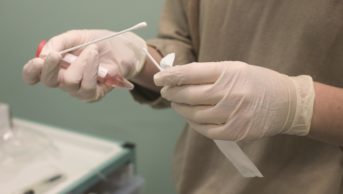
Shutterstock.com
Gentamicin is no more effective overall than ceftriaxone as a first-line treatment for gonorrhoea, but could be a useful alternative for some patients, researchers have said[1]
.
A study published in The
Lancet (2 May 2019) involved 720 people aged 16–70 years presenting with uncomplicated genital, pharyngeal or rectal gonorrhoea who were randomly assigned to either intramuscular gentamicin 240mg or intramuscular ceftriaxone 500mg, plus oral azithromycin 1g.
The overall cure rate at two weeks was higher in the ceftriaxone group than the gentamicin group, at 98% versus 91%. However, in the 328 participants with genital gonorrhoea, the cure rate was similar between the two groups at 98% and 94%, respectively.
Ceftriaxone is the current first-line treatment for gonorrhoea; however, resistant cases are beginning to emerge, leading to a need for alternatives.
The researchers said that they were unable to conclude that gentamicin was non-inferior to ceftriaxone and therefore could not recommend it as a replacement first-line treatment. However, they said it could be appropriate in genital gonorrhoea for patients allergic or intolerant to ceftriaxone, or those who have ceftriaxone-resistant infection.
“Further research is required to identify and test new alternatives to ceftriaxone for the treatment of gonorrhoea,” they concluded.
References
[1] Ross J, Brittain C, Cole M et al. Gentamicin compared with ceftriaxone for the treatment of gonorrhoea (G-ToG): a randomised non-inferiority trial. Lancet 2019. doi: 10.1016/S0140-6736(18)32817-4


